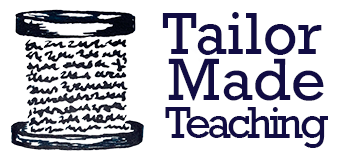-
Create Vivid Associations: Associate new vocabulary words or grammar rules with vivid images, sounds, or sensations. For example, to remember the irregular verb “go,” you could visualize a green traffic light (which indicates “go”) or imagine yourself walking through a lush green garden (where you can freely “go”).
- Use Acronyms or Acrostics: Create acronyms or acrostics to remember lists or sequences of information. For example, to remember coordinating conjunctions, think ‘FANBOYS’ (for, and, nor, but, or, yet, so); to remember the points on the compass, think ‘NEWS’ (North, East, West, South).
- Make Rhymes or Songs: Turn language rules or patterns into catchy rhymes or songs. I remember the colours in the rainbow with the classic English rhyme ‘Richard of York gave battle in vain’ (Red, Orange, Yellow, Green, Blue, Indigo, Violet).
- Create Memory Palaces: Visualize a familiar location, such as your home or school, and associate specific language items with different rooms or objects within that location. As you mentally navigate through the space, you can recall the associated language items more easily.
Benefits of Mnemonics
-
Enhanced Memory Retention: Mnemonics provide memorable associations that improve memory retention and recall of language concepts.
-
Increased Engagement: Mnemonics make learning more engaging and enjoyable by incorporating creativity and imagination into the learning process.
-
Improved Language Acquisition: Mnemonics help reinforce language learning by providing effective memory aids for vocabulary, grammar rules, and other language concepts.
Incorporating Mnemonics into Your Learning Routine
To incorporate mnemonics into your language learning routine, consider the following tips:
- Be creative and playful in creating mnemonic devices that are personal to you.
- Practice using mnemonics regularly to reinforce your learning and enhance memory retention.
- Share mnemonic techniques with fellow learners or language partners to collaborate and support each other’s learning.
- Experiment with different mnemonic strategies to find what works best for you.
Some Common Mneumonics
Do you have trouble pronouncing the word ‘hear’? Do you confuse the spelling of ‘here’ and ‘hear’?
Remember: We hear with our ear.
Do you have trouble remembering the difference in spelling stationary and stationery?
Remember: Stationary = car (imagine the car stops, so it is stationary), stationery = envelope (envelopes are items of stationery).
Do you get confused about when to use much and many?
Remember: much = uncountable, many = countable.
Do you mix up since and for?
Remember: Since = starting time, for = how long.



